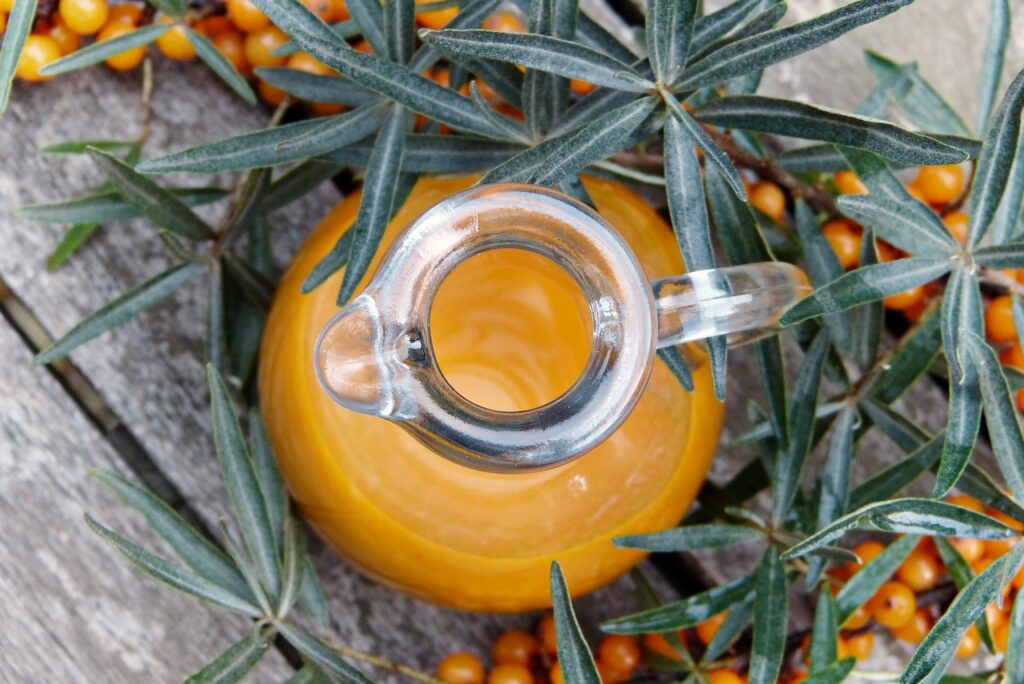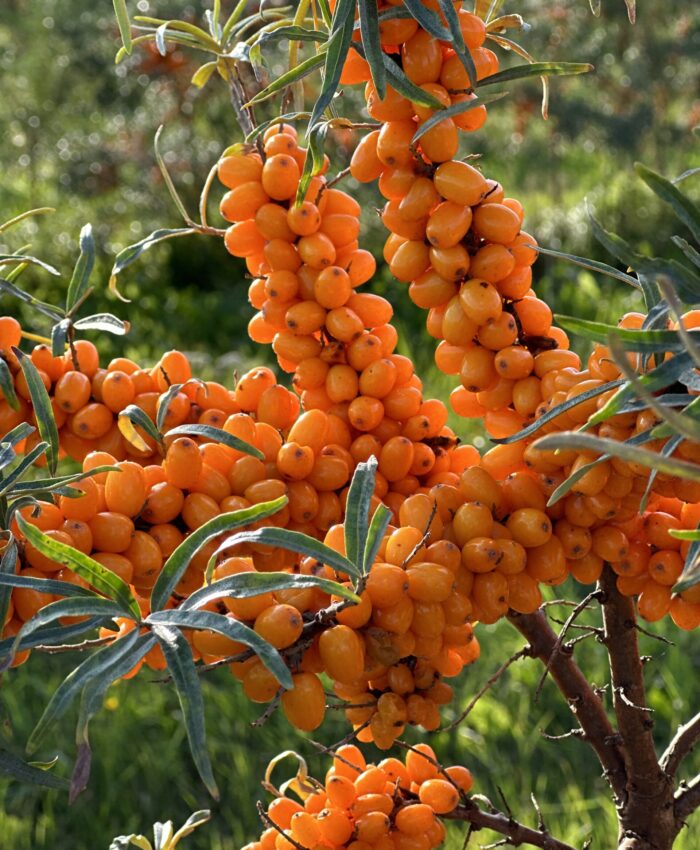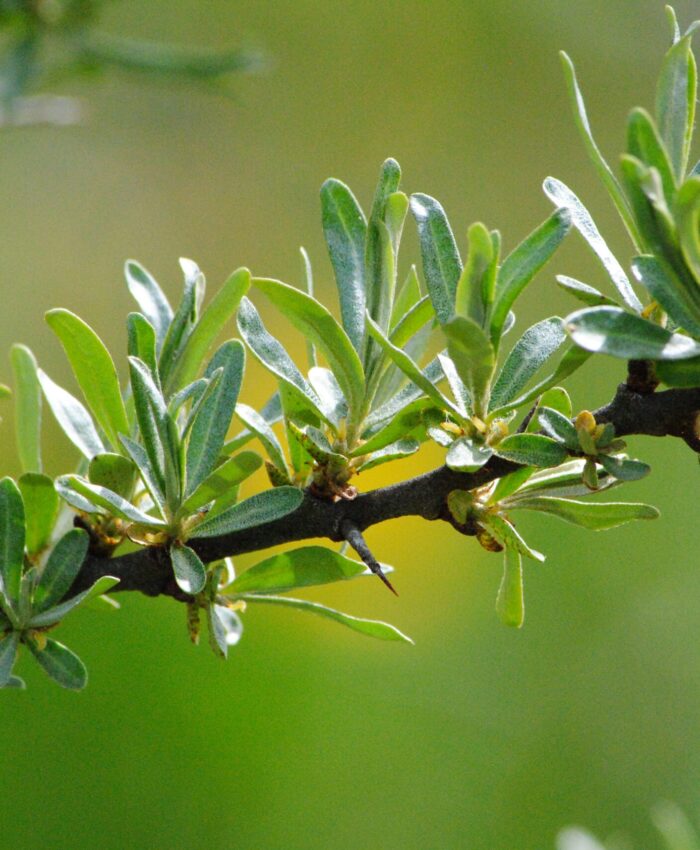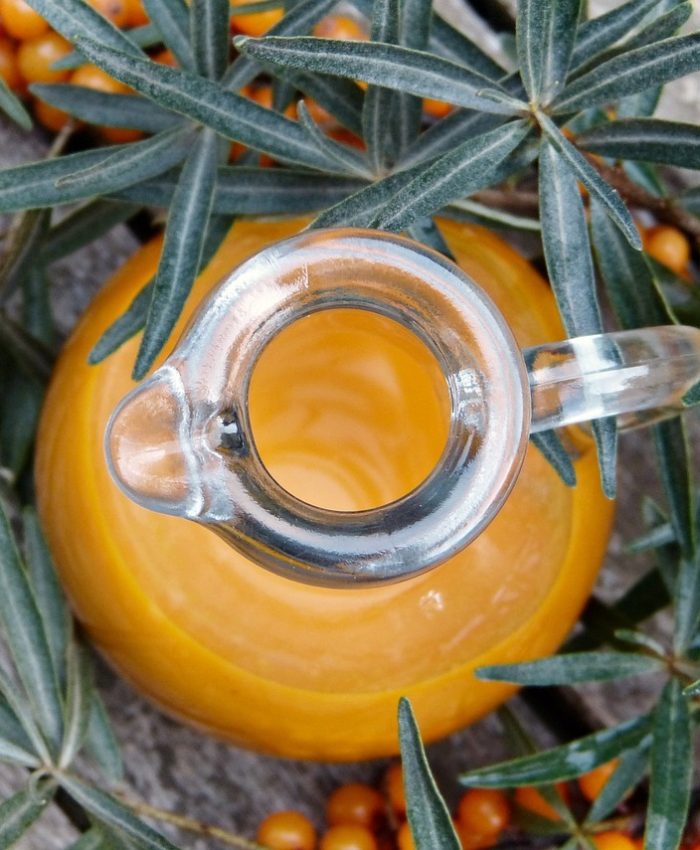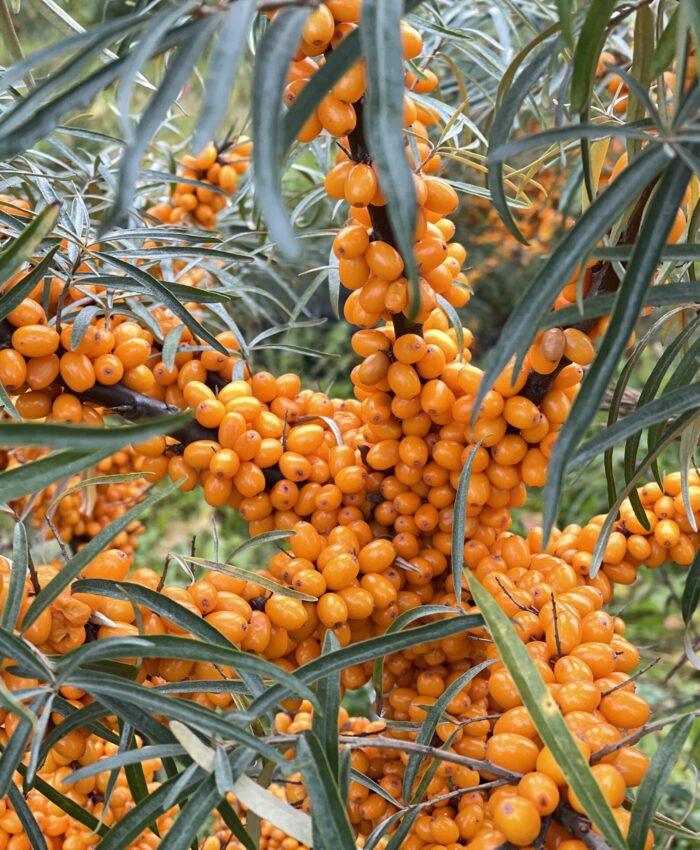A Unique Chemical Composition
Sea buckthorn berries are packed with vitamins and antioxidants, and have a fresh, distinctive flavor. But the true value of sea buckthorn lies in something very delicate: its natural potency is easily lost through excessive mechanical or thermal processing. Whether you’re making juice, jam, or any other product from these berries, it’s crucial to understand how — and why — heat impacts their quality.
The berries contain an impressive blend of vitamins, minerals, antioxidants, and essential fatty acids:
- Vitamins E and A – support skin and mucosal health
- Omega fatty acids, especially omega-7 (palmitoleic acid), which is rare in plant-based foods
- Flavonoids, carotenoids, and polyphenols – natural antioxidants that protect cells
- Organic acids, like ascorbic, citric, and malic acids, which give the berries their intense tartness
- Aromatic compounds that give sea buckthorn its unmistakable scent
What Happens When Sea Buckthorn Is Excessively Heated?
Sea buckthorn contains a wide range of heat-sensitive compounds, including vitamin C, carotenoids, and essential oils. These begin to degrade at elevated temperatures, especially above 70–80 °C (158–176 °F).
For example, vitamin C (ascorbic acid) is one of the most heat-sensitive nutrients. Studies show that its levels start to drop noticeably at 60–70 °C (140–158 °F), and when the berries are boiled or pasteurized above 85 °C (185 °F), up to 90% of the vitamin C may be lost. This breakdown occurs because heat disrupts the molecular structure of ascorbic acid, rendering it biologically inactive. So, even if the end product still tastes tangy, it may no longer contain beneficial amounts of vitamin C.
Carotenoids (the pigments responsible for sea buckthorn’s vivid color) also become unstable and oxidize when exposed to high heat. As a result, the product often turns a dull, beige-orange or even brown, with reduced antioxidant power.
Heat also affects the natural oils within the berry. When sea buckthorn is heated, the cell structure breaks down, causing the internal oils — which are normally retained in tiny droplets within intact cells — to be released and rise to the surface. Once exposed to air, these oils oxidize, leading to a more bitter taste and less fresh aroma. This is why cooked sea buckthorn products often have an “oilier” appearance and may smell less appealing.
Furthermore, heat causes the loss of aromatic compounds, leaving behind a flat or even unpleasant smell that is far removed from the wild, fresh aroma of raw berries.
Why Overheated Sea Buckthorn No Longer Tastes Like the Fresh Berry?
The sweet-tart flavor of fresh sea buckthorn is the result of delicate natural compounds that are very sensitive to heat. When processed at high temperatures, several things happen:
- Natural sugars may caramelize
- Organic acids degrade
- Cellular oils are released and oxidized
Together, these changes disrupt the berry’s original flavor balance and reduce its characteristic aroma.
Moreover, fatty acids, especially monounsaturated ones like omega-7, are highly susceptible to heat and oxygen. During heating, lipid oxidation occurs, which:
- Causes a rancid or bitter taste
- Destroys beneficial compounds like tocopherols and carotenoids
- Can lead to the formation of unwanted secondary compounds
As a result, cooked sea buckthorn products often have a flat, slightly rancid, and unbalanced flavor that bears little resemblance to the juicy, vibrant taste of the fresh fruit.
How to Preserve Sea Buckthorn’s Best Qualities
The true value of sea buckthorn can only be preserved through careful and gentle handling. If you have the freezer space, the best way to store sea buckthorn is by deep-freezing the berries. This allows you to take out exactly the amount you need, exactly when you need it — whether to make fresh juice, blend a smoothie, or enjoy a handful as a healthy snack.
To retain the berry’s nutritional and sensory value in cases where pasteurization is needed, lower-temperature processing is key. For example, short-term heat treatment at around 70–75 °C (158–167 °F) can help preserve much of the vitamin content and flavor. This way it is possible to get a product which:
- Tastes remarkably close to the fresh berry
- Retains a naturally bright, orange-golden color
- Does not overly separate or develop excessive oiliness
- Maintains a clean, vibrant aroma
Vacuum drying or freeze-drying methods are also a great option to help retain quality.
Sources:
- Beveridge, T., Li, T. S. C., Oomah, B. D., & Smith, A. 1999. Sea buckthorn products: Manufacture and composition. Journal of Food Science, 64(5): 719–722.
- Munyaka, A. W., Makule, E. E., Oey, I., & van der Linden, G. 2010. Thermal degradation of vitamin C and antioxidant capacity in vegetables and fruits: A review. Food Research International, 43(7): 1814–1822.
- Saini, R. K., Nile, S. H., & Park, S. W. 2015. Carotenoids from fruits and vegetables: Chemistry, analysis, occurrence, bioavailability and biological activities. Food Research International, 76: 735–750.

